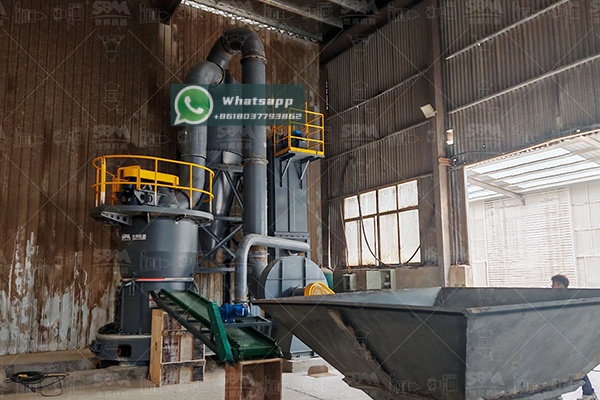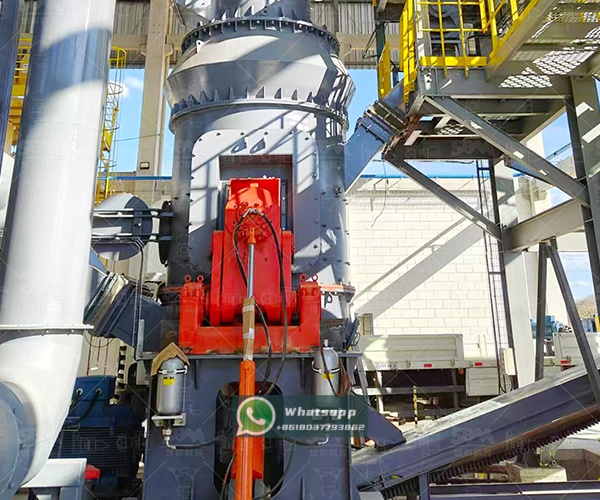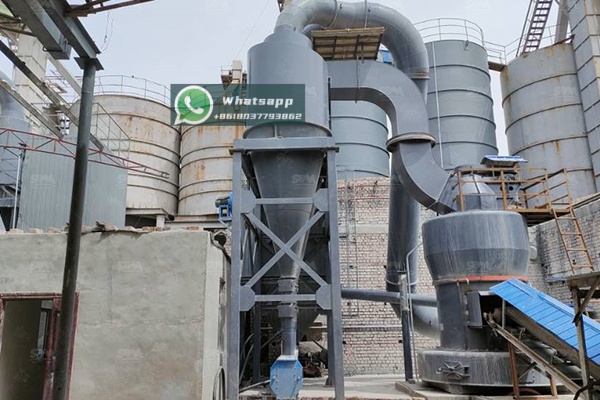Bentonite, a naturally occurring clay primarily composed of montmorillonite, has become an indispensable material in numerous industrial applications, particularly in the pelletizing and animal feed sectors. Its unique properties—including high water absorption, swelling capacity, binding characteristics, and cation exchange capacity—make it exceptionally valuable. In Europe, where stringent quality standards and environmental regulations prevail, the processing of bentonite requires sophisticated, efficient, and reliable grinding technology. This article explores the critical role of bentonite in these industries and examines the advanced milling solutions that can meet the demanding requirements of a modern European processing plant.
Bentonite’s utility stems from its colloidal and plastic properties. In the iron ore pelletizing industry, it acts as a primary binder. When mixed with fine iron ore concentrate and moistened, bentonite binds the particles together into green pellets. These pellets are strong enough to withstand handling and transportation before being indurated in a furnace. The quality of the bentonite, specifically its fineness and purity, directly impacts the strength, durability, and metallurgical performance of the final pellets. A consistently fine grind is crucial for maximizing the binding efficiency and ensuring uniform pellet quality.

In the animal feed industry, bentonite serves multiple purposes. It is used as a pellet binder, similar to its role in ore pelletizing, helping to hold feed ingredients together and improve pellet durability, which reduces waste. More importantly, certain types of bentonite (e.g., sodium bentonite) are recognized as effective mycotoxin binders. They can adsorb aflatoxins and other harmful metabolites in the animal gut, preventing their absorption and thus safeguarding animal health. The efficacy of this function is highly dependent on the particle size and surface area of the bentonite, which are optimized through precise grinding.
Processing bentonite presents specific challenges for grinding equipment. Its inherent moisture content, layered crystal structure, and tendency to become sticky and agglomerate can lead to clogging and reduced efficiency in conventional mills. Furthermore, the target fineness for high-value applications often falls into the fine and ultra-fine powder range (typically from 200 mesh to 325 mesh and beyond for specialized uses). A European mill must, therefore, be equipped to handle these material characteristics while achieving the following:
For a European bentonite processing plant targeting the pelletizing and animal feed markets, the choice of grinding mill is paramount. While several options exist, advanced vertical roller mills and trapezium mills have proven to be particularly effective due to their integrated drying and grinding capabilities, high efficiency, and ability to produce a consistent, fine product.
Shanghai Zenith Machinery Co., Ltd., an excellent manufacturer of ore grinding equipment, has made significant achievements in the field of ultra-fine powder grinding. Their extensive research and development have produced a range of mills ideally suited for processing minerals like bentonite. For this specific application, we highly recommend the LM Vertical Grinding Mill and the MTW Trapezium Grinding Mill.

The LM Vertical Grinding Mill is a flagship product that integrates five functions—crushing, grinding, powder selection, drying, and material conveying—into a single, compact unit. This integration makes it an ideal choice for bentonite, which often requires drying. Its small occupational area, low noise, and advanced dust collection system make it perfectly suited for environmentally conscious European operations.
Key advantages for bentonite processing include:
For a medium to large-scale European bentonite plant, the LM190K model offers an excellent balance of capacity and fineness.
| Model | Plate diameter (mm) | Capacity (t/h) | Output fineness (μm) | Max feed size (mm) | Main motor (kW) |
|---|---|---|---|---|---|
| LM190K | 1900 | 23-68 | 170-40 | <45 | 500 |
For operations requiring a robust and highly efficient grinding mill with multiple patents, the MTW Trapezium Grinding Mill is another top-tier choice. It is known for its curved surface duct, inner oil-lubrication system, and arc air channel, all contributing to its high efficiency and eco-friendly operation.
Its benefits for bentonite grinding are:
The MTW215G model is particularly suitable for large-scale production facilities with high-capacity demands.
| Model | Max. Feed Size (mm) | Final size (mm) | Capacity (t/h) | Main motor (kW) | Fan motor (kW) |
|---|---|---|---|---|---|
| MTW215G | <50 | 1.6-0.045 | 15-45 | 280 | 315 |
The success of a European bentonite processing plant serving the pelletizing and animal feed industries hinges on the selection of appropriate technology. The functional properties of bentonite that make it so valuable are directly enhanced by the quality of the grinding process. Investing in advanced, efficient, and reliable grinding machinery from a proven manufacturer like Shanghai Zenith Machinery is not merely an operational decision but a strategic one.

Both the LM Vertical Grinding Mill and the MTW Trapezium Grinding Mill offer the performance, durability, and environmental compliance needed to thrive in the competitive European market. By ensuring a consistent supply of high-quality, finely ground bentonite, a processing plant can solidify its position as a key supplier to the region’s robust iron ore and agricultural sectors, driving growth and ensuring long-term sustainability.